【Deep Dive Essays】Complete Guide to Hiking in Japan for International Visitors — Essential Preparation for Your First Mountain Experience
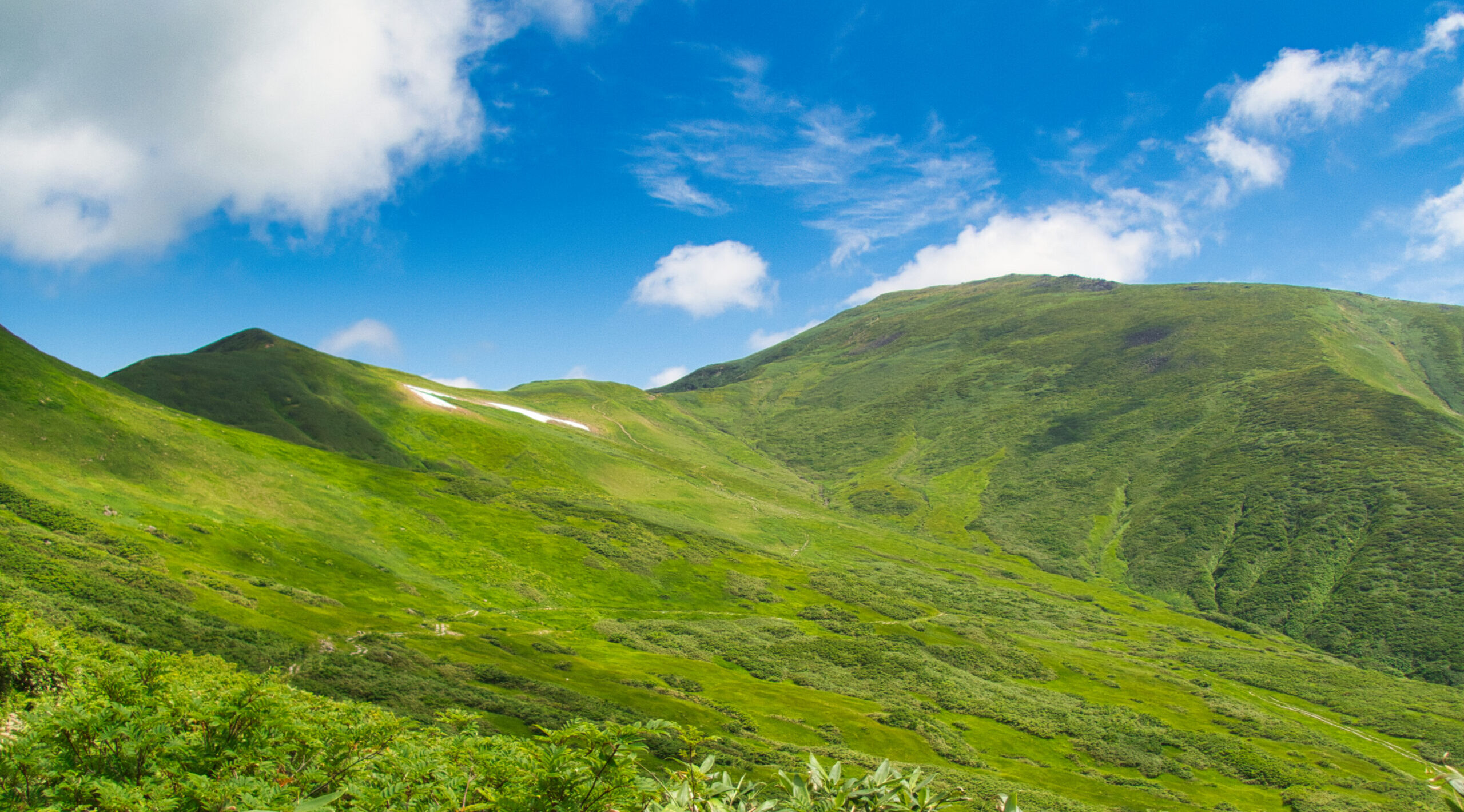
目次
- 1 Article Information
- 2 1. Introduction: Why Japan’s Mountains Are Unique
- 3 2. Understanding Japanese Mountains: Geography, Climate, and Culture
- 4 3. When to Go: Seasonal Considerations
- 5 4. Planning Your Hike: Research and Preparation
- 6 5. Getting There: Transportation Essentials
- 7 6. What to Bring: Essential Gear for Japanese Mountains
- 8 7. Food and Water: Managing Nutrition on the Trail
- 9 8. Cultural Etiquette: Respecting Japanese Mountain Traditions
- 10 9. Safety and Emergency Protocols
- 11 10. Budgeting: Cost Breakdown for Mountain Adventures
- 12 11. Language Tips: Essential Japanese for Hikers
- 13 12. Mountain Huts and Accommodations
- 14 13. Conclusion: Your Journey Begins
Article Information
- Difficulty Level: Beginner to Intermediate
- Target Audience: International visitors new to hiking in Japan
- Article Type: Comprehensive preparation guide
- Keywords: hiking in Japan, Japanese mountains preparation, international hikers guide
- Related Articles: 5 Best Mountains for Beginner Hikers Near Tokyo
1. Introduction: Why Japan’s Mountains Are Unique
Japan’s mountains offer experiences unlike anywhere else in the world. The combination of accessibility, natural beauty, rich cultural heritage, and meticulous trail maintenance creates a hiking environment that both welcomes beginners and challenges experienced mountaineers.
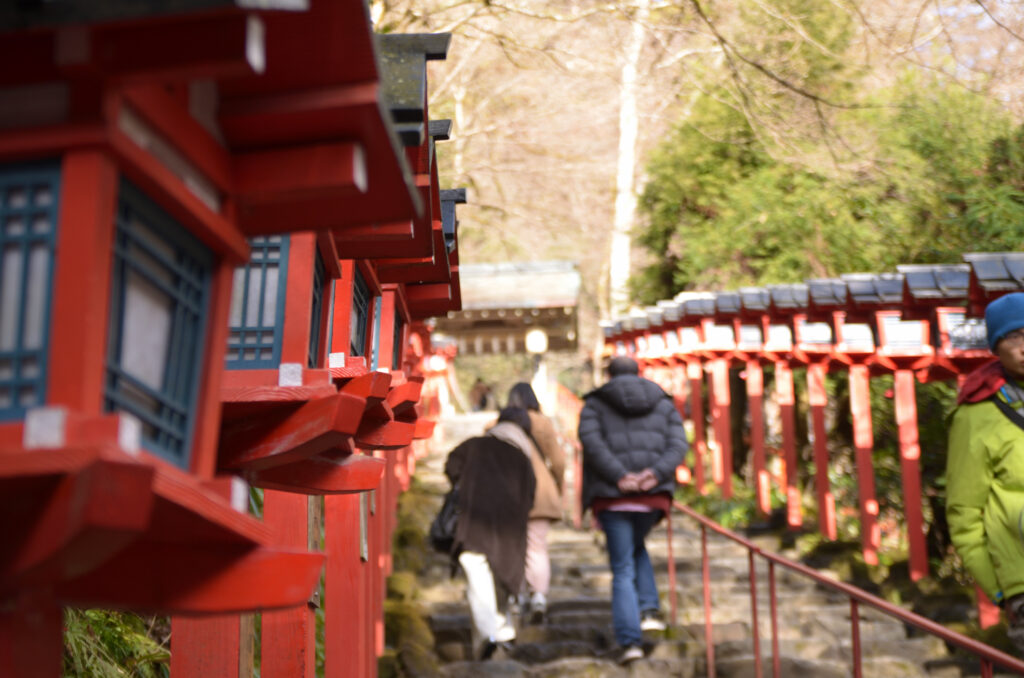
What makes Japanese mountains special:
- Accessibility meets wilderness. Major trailheads often lie just 2-3 hours from Tokyo or Osaka by public transportation. Yet once on the trail, you encounter genuine wilderness—deep forests, alpine meadows, and rugged peaks that feel worlds away from urban centers.
- Cultural depth. Japanese mountains aren’t merely recreational spaces. They’re sacred sites where Shinto shrines and Buddhist temples nestle among the peaks, where ancient mountain worship (sangaku shinko) continues, and where the concept of climbing as spiritual practice remains alive.
- Infrastructure excellence. Trail maintenance, signage, mountain hut systems, and emergency services operate at levels rarely found elsewhere. This infrastructure enables safe access without diminishing the wild character of the mountains.
- Four distinct seasons. Japan’s mountains transform dramatically through the year. Spring brings alpine wildflowers, summer offers comfortable temperatures at elevation, autumn paints the slopes in spectacular colors, and winter creates serious alpine conditions requiring technical skills.
Yet these unique qualities also create specific challenges for international visitors. Transportation systems operate differently. Cultural expectations on trails differ from Western norms. Weather patterns follow unfamiliar cycles. This guide addresses these challenges systematically, providing the knowledge foundation for successful mountain experiences in Japan.
Who should read this guide:
- First-time visitors planning to hike in Japan
- Experienced hikers unfamiliar with Japanese mountain culture
- Those seeking comprehensive preparation beyond basic trail information
- Hikers wanting to understand the cultural context of Japanese mountains
What this guide covers:
This is not a collection of specific mountain recommendations (see our mountain-specific guides for that). Instead, this guide provides the foundational knowledge applicable across all Japanese hiking contexts—the transportation know-how, gear considerations, cultural understanding, and practical skills that apply whether you’re climbing Mt. Takao or attempting a Hodaka Ridge traverse.
The guide balances practical logistics with cultural insight. You’ll learn not just how to reach trailheads, but why certain etiquette matters. Not just what gear to bring, but how Japanese conditions differ from other mountain regions.
2. Understanding Japanese Mountains: Geography, Climate, and Culture
Geographic Overview
Japan’s mountainous terrain covers approximately 73% of the country’s landmass. The Japanese Alps—divided into Northern (Kita), Central (Chuo), and Southern (Minami) ranges—form the backbone of Honshu, the main island. Multiple peaks exceed 3,000 meters, with Mt. Fuji reaching 3,776m as the highest.
Key mountain regions:
- The Japanese Alps (Honshu): The primary destination for serious hiking. The Northern Alps offer dramatic granite peaks and knife-edge ridges. The Central Alps provide volcanic landscapes. The Southern Alps feature remote, heavily forested mountains with limited access.
- Mt. Fuji region: An iconic standalone volcano visible from Tokyo on clear days. Its perfect cone shape dominates the landscape and represents Japan’s most recognizable natural feature.
- Hokkaido ranges: Japan’s northernmost island features mountains with subarctic characteristics, heavier snowfall, and bear populations requiring special precautions.
- Tohoku region: Northern Honshu’s mountains offer fewer crowds, rich volcanic activity, and some of Japan’s finest autumn colors.
Mountain worship heritage: Japan’s mountains carry spiritual significance predating both Buddhism and organized Shinto. The concept of mountains as dwelling places of kami (spirits/deities) or as deities themselves shaped Japanese culture for millennia. Shugendo practitioners (mountain ascetics) established training routes throughout the ranges. Many popular hiking trails follow these ancient pilgrimage paths. Today, this heritage manifests in shrines at trailheads and summits, ritual purification sites, and the respectful silence many Japanese hikers maintain at sacred peaks. Understanding this context enriches the hiking experience and guides appropriate behavior.
Climate Patterns
Japan’s climate varies significantly by latitude, altitude, and season. The country’s position between the Pacific Ocean and Asian continent creates distinct weather patterns unfamiliar to many international visitors.
Seasonal characteristics:
- Spring (March-May): Snow melts at lower elevations, but higher peaks remain snow-covered into May. Cherry blossoms bloom in valleys while mountains retain winter conditions. This transition period offers pleasant temperatures but requires careful route selection.
- Rainy season—Tsuyu (mid-June to mid-July): An extended period of persistent rain affects most of Japan. Mountains become slippery, visibility drops, and stream levels rise dramatically. Many experienced hikers avoid mountains during tsuyu, though breaks in weather can provide excellent hiking conditions.
- Summer (late July-August): After rainy season, brief but intense summer heat arrives. Afternoon thunderstorms develop regularly, particularly at elevation. Morning starts become standard practice to descend before storm activity peaks around 2-4 PM.
- Typhoon season (August-October): Tropical cyclones approach Japan with varying frequency and intensity. Typhoons bring dangerous conditions including extreme precipitation, high winds, and rapid weather deterioration. Modern forecasting provides several days warning, allowing schedule adjustments.
- Autumn (September-November): Optimal hiking season for most mountains. Stable weather, comfortable temperatures, spectacular fall colors (koyo), and clear visibility. Crowds increase at popular destinations, particularly during peak color periods.
- Winter (December-February): Mountains transform into serious alpine environments. Even relatively low peaks experience significant snowfall. Temperatures plummet, and wind exposure creates dangerous conditions. Winter mountaineering requires technical skills, specialized equipment, and experience. Not recommended for visitors unfamiliar with winter alpine environments.
Elevation effects: Temperature drops approximately 6.5°C per 1,000m elevation gain. A 25°C summer day at the trailhead means 10°C to 15°C at 2,500m elevation. Wind chill significantly amplifies this effect on exposed ridges.
Cultural Context: Mountains in Japanese Society
The concept of Hyakumeizan (100 Famous Mountains): In 1964, mountaineer and author Kyuya Fukada published his personal selection of 100 notable Japanese mountains. This list became extraordinarily influential, shaping Japanese hiking culture. Many Japanese hikers pursue completing all 100 peaks, driving significant traffic to certain mountains. For international visitors, Hyakumeizan peaks often provide excellent targets with good infrastructure and information availability, though popularity means crowds on weekends and holidays.
Mountain hut culture (Yamagoya):
Japan’s extensive mountain hut (yamagoya) system differs fundamentally from Western backcountry huts. Japanese huts typically:
- Provide meals (dinner and breakfast)
- Offer futon bedding in shared sleeping spaces
- Require advance reservations
- Operate seasonally (roughly late June to early October for high-altitude huts)
- Charge substantial fees (¥8,000-12,000 per night with meals)
- Maintain high cleanliness standards
This system enables extended alpine trips without carrying tent or extensive food supplies, though it trades wilderness solitude for social atmosphere.
Group hiking culture:
Japanese hiking culture emphasizes group activities. Many hikers belong to clubs that organize regular outings. This manifests in coordinated clothing, group photos at summits, and social interactions at huts. Solo hiking occurs but represents the minority approach.
For solo international visitors, this creates a welcoming environment. Japanese hikers often show friendly interest in foreigners on trails, though language barriers may limit conversation depth.
3. When to Go: Seasonal Considerations
Selecting the right season fundamentally affects your hiking experience. Japan’s pronounced seasons create distinct mountain environments, each with specific advantages and challenges.
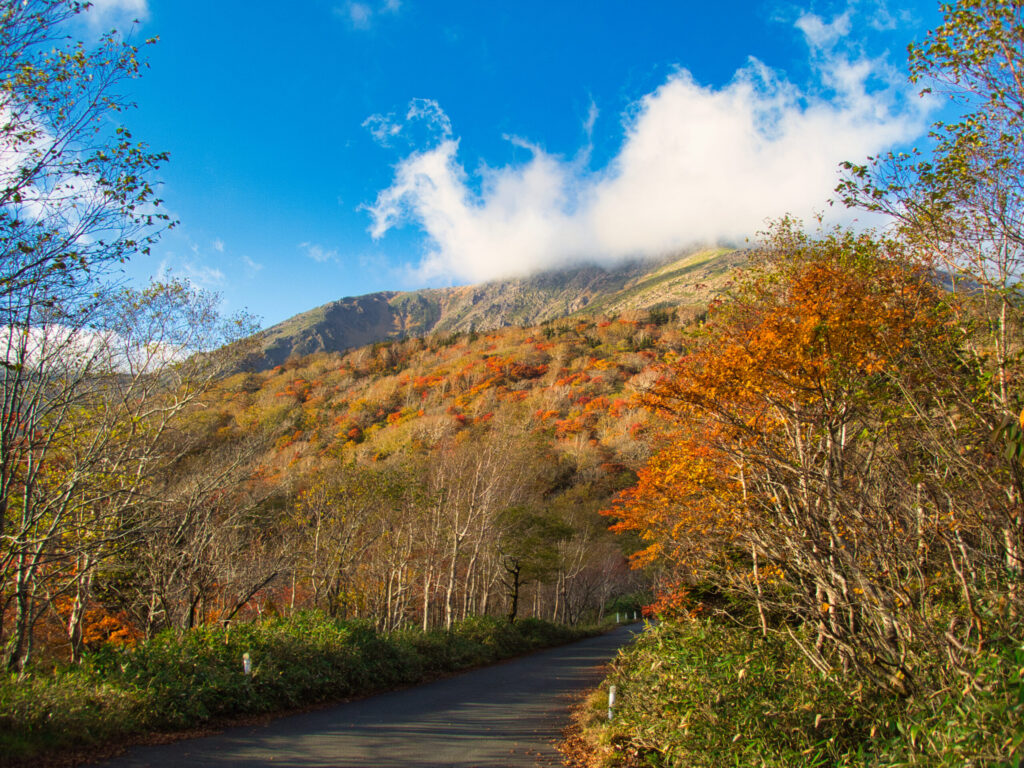
Spring (March-May): Transition and Cherry Blossoms
Lower elevations (under 1,500m): Excellent hiking conditions by April. Cherry blossoms (sakura) bloom in mountain valleys, creating spectacular scenery. Temperatures comfortable, trails dry, crowds moderate outside cherry blossom peak. Higher elevations (above 2,000m): Snow remains substantial through April, often into May. Routes require winter equipment and skills. Avalanche danger persists. Most high-altitude huts remain closed.
- Best for: Day hikes near cities, low-mountain exploration, combining hiking with cherry blossom viewing.
- Avoid: High alpine routes (unless equipped for snow travel).
Practical considerations:
- Book accommodations early during cherry blossom season (late March-early April varies by region)
- Weather unstable—bring full rain gear
- Trail conditions vary dramatically by elevation
Early Summer (June-early July): Rainy Season
The tsuyu challenge: Japan’s rainy season brings persistent precipitation. While not continuous downpour, expect frequent rain, low clouds, muddy trails, and limited visibility.
Why some hikers choose this season:
- Fewer crowds
- Lush green landscapes
- Waterfalls at peak flow
- Occasional weather windows provide excellent conditions
- Good training period for foul-weather skills
Challenges:
- Wet trails increase slip risk
- Stream crossings become dangerous or impossible
- Ridge walks exposed to wind-driven rain
- Visibility often zero at elevation
- Gear stays wet for extended periods
- Best for: Low-elevation hikes, forest walks, waterfall viewing, hut-based trips where you can dry gear.
- Avoid: Technical ridge traverses, stream crossings, routes depending on views.
High Summer (Late July-August): Heat and Storms
The climbing season opens: High-altitude mountain huts begin operation (typically late June-early July). Snow melts from major trails. The brief alpine summer begins.
Advantages:
- All routes accessible
- Long daylight hours (sunrise around 4:30 AM, sunset after 7 PM)
- Huts fully staffed
- Alpine flowers bloom
- Minimal gear weight needed
Challenges:
- Afternoon thunderstorms develop regularly
- Lightning danger on exposed ridges and peaks
- Heat at low elevations (often 30°C to 35°C)
- Crowds at popular mountains (especially Obon week in mid-August)
- Higher prices (peak season rates)
Critical safety practice: Alpine start. Begin hiking by 6 AM to reach summits by noon and descend before afternoon storms develop (typically 2-4 PM). Thunderstorms in Japanese mountains are serious—lightning strikes cause fatalities every year.
- Best for: Multi-day hut-to-hut traverses, high-altitude peaks, Northern Alps expeditions.
- Avoid: Afternoon ridge walking, late starts, ignoring storm forecasts.
Autumn (September-November): Prime Season
Optimal conditions: Autumn provides the best combination of stable weather, comfortable temperatures, and spectacular scenery. This is Japan’s premier hiking season.
Fall colors (koyo):
Japanese maple and beech forests create brilliant red, orange, and yellow displays. Timing varies by latitude and elevation:
- Hokkaido: Late September-early October
- Northern Honshu: Early-mid October
- Central Honshu: Mid-late October
- Lower elevations: Late October-November
Advantages:
- Stable high-pressure systems
- Clear visibility
- Comfortable temperatures (15°C to 20°C at mid-elevations)
- Spectacular scenery
- Reduced insect activity
Challenges:
- Heavy crowds during peak color weekends
- Transportation and huts book far in advance
- Typhoon season continues through October
- Earlier sunset (around 5 PM by October)
- First snow possible at high elevations by late September
- Best for: Everything. Autumn offers ideal conditions for nearly all Japanese mountain activities.
- Avoid: Peak weekends without reservations, complacency about weather (typhoons still occur).
Winter (December-February): Serious Mountaineering
Transformed landscape: Japanese mountains receive heavy snowfall, particularly those facing the Sea of Japan. Even relatively low peaks become serious undertakings.
Technical requirements:
- Crampons (12-point or more)
- Ice axe or tools
- Avalanche knowledge and gear (beacon, shovel, probe)
- Winter camping equipment or access to winter huts (few remain open)
- Navigation skills (trails disappear under snow)
- Cold weather clothing systems
Why experienced mountaineers love Japanese winter:
- Spectacular snow conditions
- Solitude (few hikers)
- Unique challenges
- Beautiful rime ice formations
- Training for bigger objectives
For international visitors: Unless you have extensive winter mountaineering experience and appropriate equipment, avoid Japanese mountains in winter. The combination of heavy snowfall, strong winds, and cold temperatures creates conditions more severe than many visitors anticipate based on latitude alone.
Accessible winter options:
- Low mountains near cities (Mt. Takao, Mt. Tsukuba) may be hiked with minimal additional gear
- Snowshoeing in foothills
- Organized guided trips
- Ski touring (if experienced)
4. Planning Your Hike: Research and Preparation
Successful mountain experiences begin with thorough planning. Japanese mountains’ excellent infrastructure can create false confidence—rescue, if needed, may take hours even on popular routes.
Information Sources
English-language resources:
Guidebooks:
- “Hiking in Japan” by Lonely Planet provides overview coverage
- “100 Mountains of Japan” (partial English translations exist)
- Regional guides for specific areas
Websites:
- Japan National Tourism Organization (JNTO): Official tourism information
- Japan Guide: Practical travel information including some hiking content
- Hyperdia/Google Maps: Journey planning
- Mountain-specific official websites (often Japanese-only)
Apps:
- YAMAP: Japan’s most popular hiking app, GPS tracking, offline maps, some English interface
- Yama-reco: Trail reports and photos, mostly Japanese
- Geographica: GPS app popular with Japanese hikers
Japanese-language resources (more comprehensive):
- Yamakei Online: Extensive route information, conditions, reports
- Mountain hut official websites
- Weather forecasting services (Tenki.jp, mountains-specific forecasts)
Language barrier reality: Most detailed, current information exists only in Japanese. Consider:
- Using translation apps (Google Translate camera function works reasonably well)
- Joining English-language hiking groups in Japan (Facebook groups exist)
- Hiring guides for complex routes
- Focusing on well-documented popular routes initially
Route Selection
Matching difficulty to ability:
Japanese hiking grades don’t directly correspond to international systems. A “beginner” route might involve 1,000m elevation gain over 3-4 hours. Consider:
Technical difficulty:
Most popular routes follow well-maintained trails without technical climbing. However:
- “Chain sections” (鎖場, kusariba) use fixed chains on steep rock
- Ridge walks may include exposed sections
- Some routes require basic scrambling
Physical demands:
Sustained steep sections are common. Japanese trails often go straight up ridges rather than switchbacking. Test fitness on shorter hikes before committing to full-day or multi-day trips.
Escape options:
Research bailout routes. Weather changes rapidly in mountains. Know where you can safely descend if conditions deteriorate.
Weather Forecasting
Essential forecast checks:
General weather:
- Japan Meteorological Agency (English available)
- Tenki.jp (most accurate, Japanese)
Mountain-specific forecasts:
- Mountains provide specialized forecasts considering elevation effects
- Check evening before and morning of hike
- Understand forecast symbols and probability
Forecast interpretation:
Japanese weather forecasts express precipitation probability as percentage: 30% doesn’t mean 30% of day with rain, but 30% probability of any measurable precipitation. Above 40% probability, expect rain. Critical: Afternoon thunderstorm forecasts in summer should be taken seriously. If thunderstorm probability exceeds 30%, start extremely early or reschedule.
Required Documentation
Hiking plan (登山届, tozan-todoke): Japanese regulations require filing a hiking plan before entering mountains. This document includes:
- Names and emergency contacts
- Intended route and schedule
- Equipment carried
- Experience level
How to file:
- Submission boxes at trailheads (forms available, Japanese)
- Online systems (some prefectures offer English options)
- Police stations near mountain areas
- Some apps (YAMAP allows digital submission)
Why it matters: In emergency situations, search and rescue teams need this information. Filing plans also provides legal protection in some situations.
Insurance Considerations
Rescue costs: Japan does not automatically cover mountain rescue costs. Helicopter evacuations can cost ¥300,000-1,000,000 ($2,000-7,000 USD) or more.
Coverage options:
Japanese mountain insurance:
- Annual policies available for ¥300-1,000
- Cover rescue costs
- Purchased at some outdoor retailers, convenience stores, or online
- Most include accident medical coverage
- Simple application process (some offer English)
Travel insurance:
Check if your existing travel insurance covers mountain rescue and at what elevations. Many policies exclude mountaineering or have elevation limits.
Credit cards:
Some cards include travel insurance, but mountain activities are often excluded.
Recommendation: Purchase Japanese mountain insurance. The minimal cost provides peace of mind and crucial financial protection.
5. Getting There: Transportation Essentials
Japan’s public transport system is among the world’s best, but accessing mountain trailheads can be complex for international visitors. Successful planning hinges on understanding the transport system.
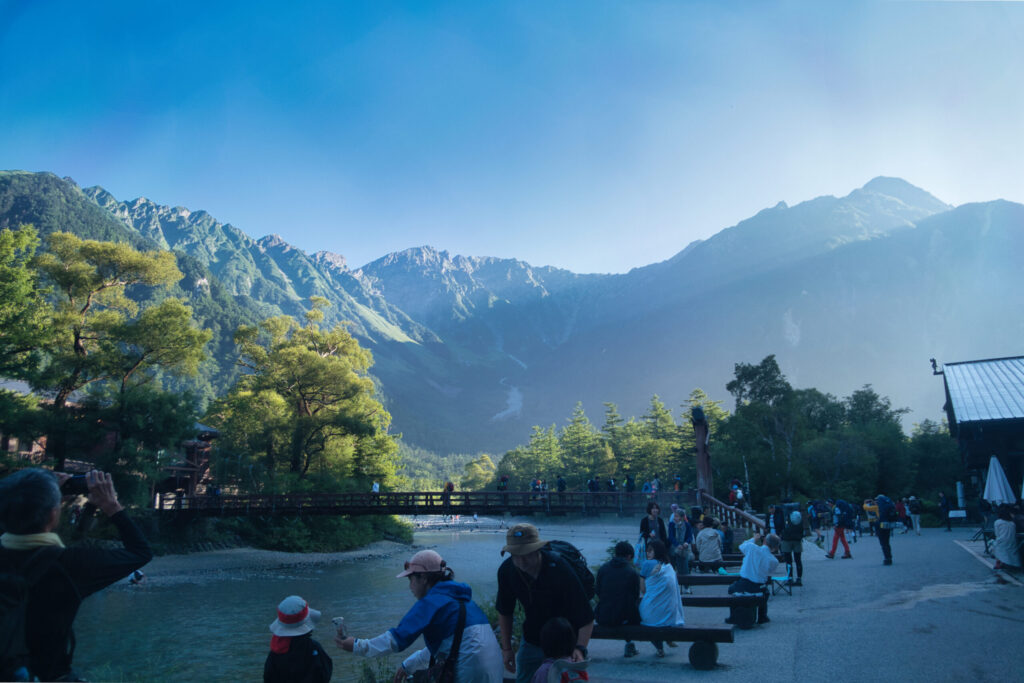
Train and Bus Coordination
Most major trailheads are connected to railway stations by bus routes.
- Train: JR (Japan Railways) lines and private railways run from urban centers to the closest station to the trailhead. These lines are highly reliable and punctual.
- Buses (to the trailhead): Accessing the trailhead directly is typically done via mountain buses or local buses.
- Seasonal operation: Many buses going to high-altitude areas only operate during the main hiking season (typically early July to late September/mid-October). Service is often suspended or significantly reduced outside these times.
- Reservations: For popular mountains (e.g., Kamikochi, Mt. Fuji), bus services, especially on weekends and holidays, often require advance reservation. They can sell out weeks ahead during peak congestion.
- Timetable: Bus schedules are often coordinated with train arrivals. Be sure to check the time of the last bus for your return trip, not just the outbound trip, and factor this into your descent plan. Missing the last bus can result in high taxi fares or necessitate unplanned accommodation.
Peak Season Shuttles and Private Vehicle Restrictions
In popular Japanese mountain areas, private vehicle restrictions (マイカー規制, maika-kisei) are common for environmental protection and traffic control (e.g., Kamikochi, parts of the Yari-Hotaka range).
- Private cars or rentals must be parked at a designated parking lot, and hikers must transfer to a shuttle bus to reach the trailhead.
- These shuttle buses can be extremely crowded, and expect long queues, especially early mornings and evenings on weekends.
- Hyperdia/Google Maps: Essential for checking train and bus connections, travel times, and fares. Entering the exact Japanese name for the trailhead (e.g., “Kamikochi Bus Terminal”) will yield more accurate results.
- Understanding Local Transport: Local buses and rural train lines do not run as frequently as urban transit. Be prepared for longer intervals (one per hour or less) between services.
- Transportation Costs: Travel costs to mountain areas can be surprisingly high due to multiple transfers; verify your budget beforehand.
6. What to Bring: Essential Gear for Japanese Mountains
Japanese trails are maintained, but the severity of weather changes and high-alpine conditions are universal. Your gear should be adjusted for Japan’s specific circumstances.
The 10 Essentials
The “10 Essentials” principle from international hiking applies strongly to Japanese mountains:
- Navigation (map, compass, GPS app)
- Headlamp (with extra batteries)
- Sun protection and sunglasses
- First-aid kit
- Knife or multi-tool
- ⚠️ Important Legal Note on Knives and Blades
- Japan has extremely strict laws regarding the possession and carrying of knives (including multi-tools with a locking blade). Even if intended for hiking, the risk of violating the Swords and Firearms Control Law (銃刀法) or the Minor Offenses Act (軽犯罪法) is high, especially for international visitors unfamiliar with the strict carrying requirements.
- Our Recommendation for International Visitors:
- Avoid Carrying: We strongly recommend that international visitors avoid bringing any non-essential knives or blades into Japan.
- Legal Risk: Carrying a blade exceeding 6 cm (approx. 2.36 in), or carrying any blade in a manner deemed easily accessible in public, can lead to severe legal issues, including arrest and heavy fines.
- Fire starter (waterproof matches, lighter)
- Shelter (bivy sack or emergency blanket)
- Extra food
- Extra water
- Extra insulating layers (fleece, down, rain gear)
Japanese-Specific Gear Considerations
- Rainwear: Japan’s rainy season (tsuyu) and summer thunderstorms deliver intense, high-humidity rain. High-quality, high-rated GORE-TEX or equivalent waterproof/breathable shell gear (jacket and pants) is mandatory. A poncho is usually inadequate.
- Footwear: Japanese trails frequently feature flagstones, roots, and water, which can be extremely slippery. Choose hiking boots or shoes with high grip and good waterproofing. Lightweight, flexible trail runners may not be suitable for the wet, rocky terrain.
- Navigation: A paper hiking map (Yama to Kogen map series, etc.) and compass are essential backups for GPS. While apps like YAMAP are excellent, plan for battery failure.
- Bear Bell (熊鈴, kuma-suzu): Bear bells are commonly carried to alert bears (particularly the Asian black bear on Honshu and the brown bear on Hokkaido) to your presence. You will see many local hikers using these. Bear spray may be necessary for some remote areas.
- Power Bank: Charging facilities at mountain huts can be crowded, paid, or unavailable. Carry a high-capacity power bank to sustain your GPS navigation and communication devices.
Mountain Hut vs. Camping Gear Differences
- Hut Stay (Yamagoya): You can travel lighter. Sleeping bags are generally not needed (huts provide futon bedding). Tents, extensive cooking gear, and bulk food are unnecessary. You will need lightweight slippers or sandals for indoor use and a headlamp for moving quietly at night.
- Camping: Allowed only in designated campsites. Some locations require advance reservation and payment of a fee. Requires a tent, sleeping bag, pad, and full cooking setup, significantly increasing pack weight.
7. Food and Water: Managing Nutrition on the Trail
Leveraging unique Japanese trail food options can enhance your hiking experience.
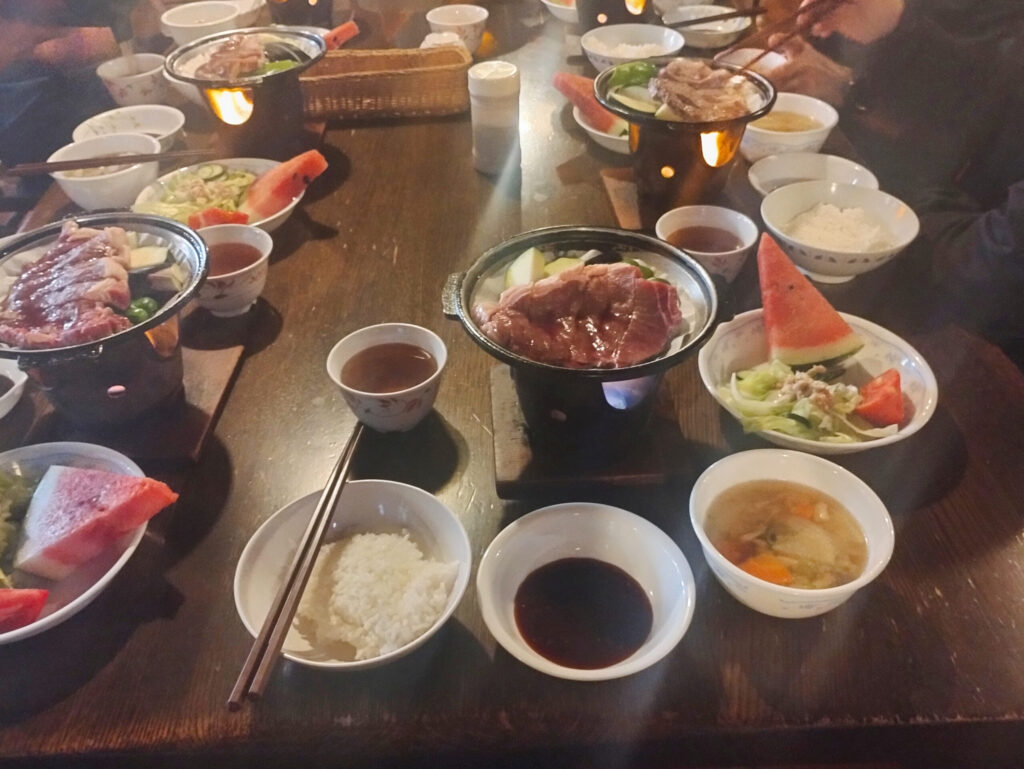
Food: Utilizing Japanese Trail Foods
- Onigiri: Rice balls, easily found at convenience stores and train kiosks, are the perfect trail food, providing salt and carbohydrates.
- Calorie Mate / Soyjoy: Highly popular energy snacks among Japanese hikers—compact and nutritionally dense.
- Trail Snacks (行動食, Kōdō-shoku): Combine dried fruit, nuts, chocolate, and Japanese snack breads.
- Hut Meals: If staying in a hut, the provided meals (often set menus of rice, soup, and main dishes) are typically well-balanced, generous, and provide the warmth needed for recovery.
Water: Resupply and Filtration
- Water Resupply: On lower, well-developed routes, you can buy bottled water from vending machines (very common) or shops. In the high mountains, you can buy water or refill at mountain huts (sometimes restricted to guests).
- Natural Sources: Japanese mountains have abundant natural springs called mizuba (水場, water sources). While local hikers often drink directly, international visitors are advised to filter or treat this water as a precaution.
- Capacity: Due to the warm and often humid Japanese summer, you will need more water than in drier climates. Aim to carry at least 2 liters of capacity.
8. Cultural Etiquette: Respecting Japanese Mountain Traditions
Japanese mountain culture is rooted in respect for nature and consideration for others. Understanding these customs ensures smooth interactions with locals.
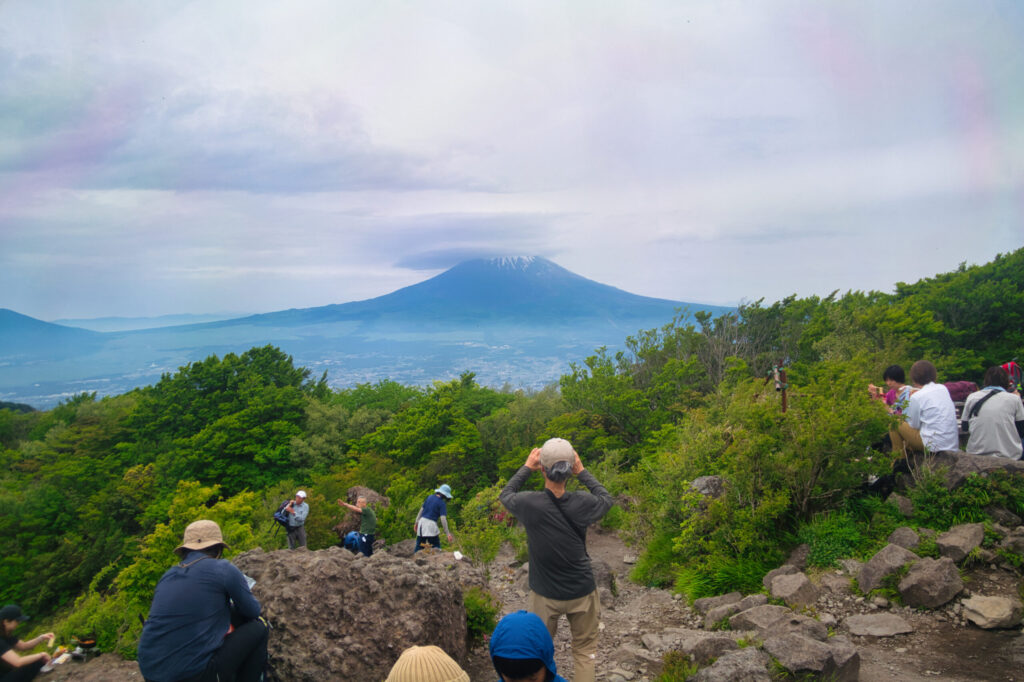
Greetings on the Trail
- Passing: Japanese hikers will almost always exchange greetings when passing.There is a chance you’ll make Japanese friends.
- “Konnichiwa” (こんにちは): Standard greeting.
- “Otsukaresama desu” (お疲れ様です): A greeting to those descending, meaning “thank you for your hard work/effort.”
- “Ganbatte kudasai” (頑張ってください): An encouraging phrase to those ascending, meaning “do your best.”
- Basic Response: A smile and “Konnichiwa” is sufficient; “Arigatou” (thank you) is also appreciated.
Trail Conduct
- Ascender Priority: Generally, those climbing have the right of way. Those descending should step aside at a safe spot to let ascenders pass.
- Carry Out All Trash: There are virtually no trash bins in Japanese mountains. All trash (wrappers, tissues, food scraps) must be carried out. This is a fundamental rule of Japanese hiking culture.
- Noise: Avoid loud conversations or playing music at high volume. Japanese mountain culture values silence, as many visit to enjoy the natural sounds.
- Respect Flora and Fauna: Strictly prohibited to leave the trail, collect plants, or feed wild animals.
Mountain Hut Manners
Huts are shared spaces with specific rules:
- Slippers: Remove your hiking boots at the entrance and switch to the provided slippers. Store boots in the designated area.
- Lights Out: Many huts have a strict lights-out time of 8 PM or 9 PM. Be quiet after this time. If using a headlamp to move around, use the red light function to minimize disturbance.
- Drying Rooms: If a drying room is provided for wet gear, use it neatly and avoid mixing your gear with others.
9. Safety and Emergency Protocols
While Japanese mountains are well-managed, natural threats persist. Understanding the correct protocols is critical.
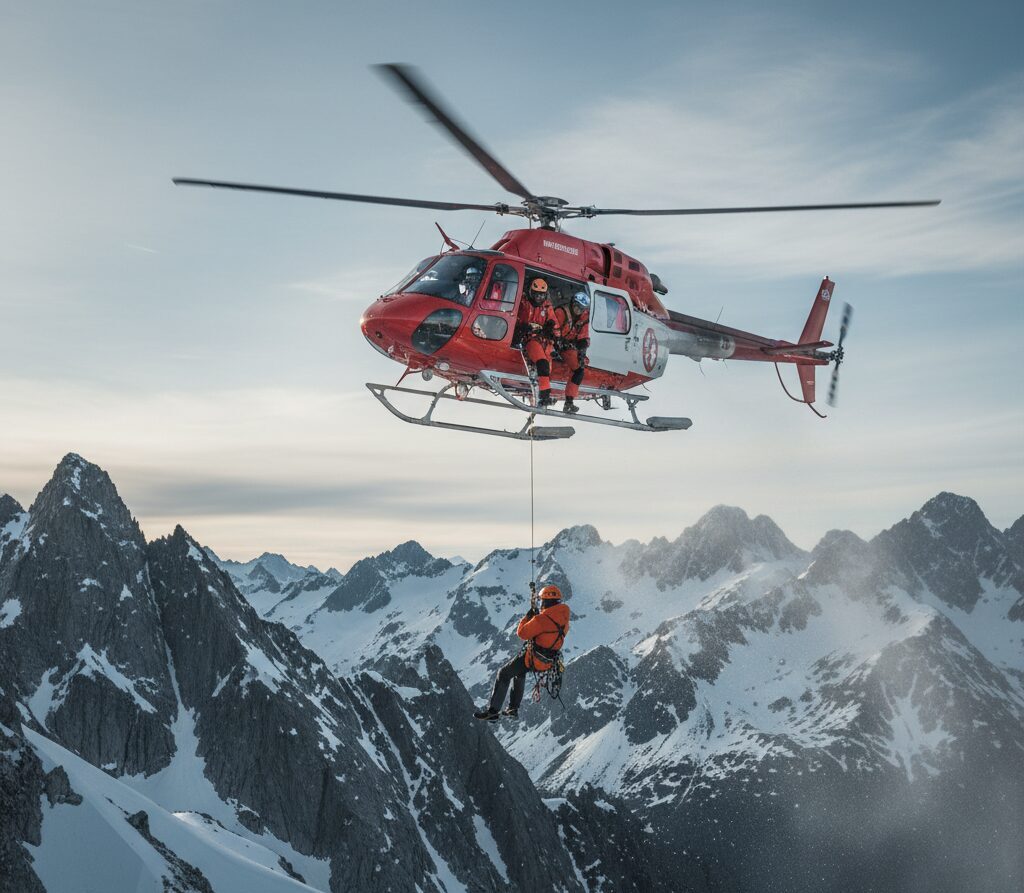
Filing the Hiking Plan (Tozan-todoke)
As noted in Section 4, filing a hiking plan is mandatory.
- In an emergency, this is the first resource for search and rescue teams.
- Failing to file a plan can put you and rescue personnel at greater risk.
Emergency Contacts
Japan’s emergency numbers are:
- Police: 110 (Hyaku-tō-ban)
- Ambulance/Fire: 119 (Hyaku-jū-kyū-ban)
If you need help in the mountains:
- Via Mountain Hut: Whenever possible, first contact mountain hut staff. They are familiar with the local area and emergency networks.
- Mobile Phone: Cell service is often nonexistent in mountainous areas. Try to find a spot with reception or use the emergency notification feature of your GPS app (like YAMAP) to send your location.
- Visual Signals: Be prepared to create a visual distress signal (e.g., V-shape, SOS) using brightly colored tarp or blankets for helicopter searches.
Lightning and Typhoon Preparedness
- Lightning (Summer): At the first sign of a thunderstorm (dark clouds, distant thunder), immediately leave ridges and peaks and descend to a lower area or below the tree line. Keep metal objects like trekking poles and ice axes away from your body.
- Typhoon: If a typhoon is approaching (usually forecast 48-72 hours in advance), cancel or postpone your hike. Japanese typhoons are extremely dangerous, causing trail washouts, rockfalls, and flash floods.
Wildlife (Bears and Monkeys)
- Bears: Carry a bear bell (kuma-suzu) and especially avoid solo travel during the early morning and evening hours when bears are active.
- Monkeys: Troops of wild monkeys may be encountered near trailheads or in lower mountains. Do not feed them or display food openly.
10. Budgeting: Cost Breakdown for Mountain Adventures
Hiking in Japan, especially when utilizing mountain huts, can be more expensive than in some other countries.
| Expense Item | Approximate Cost (1 Night/2 Days, Alpine) | Notes |
|---|---|---|
| Mountain Hut Stay | ¥8,000 – ¥12,000 / night | For lodging only. With meals (dinner/breakfast): ¥12,000 – ¥18,000. |
| Transportation | ¥5,000 – ¥20,000 | Varies significantly based on distance from city, train/bus/shuttle use. |
| Food & Trail Snacks | ¥3,000 – ¥5,000 | Trail food, water, drinks at the hut, etc. |
| Mountain Insurance | ¥300 – ¥1,000 / year | Cost of annual policy. Essential peace of mind. |
| Onsen (Post-hike) | ¥500 – ¥1,500 | Refreshment at a hot spring facility near the trailhead. |
| Total (Approx.) | ¥17,000 – ¥35,000 / 1 Night/2 Days | Varies significantly based on transportation cost. |
Cost-Saving Tips:
- Camping: Saves on hut accommodation costs, but requires paying a campsite fee (usually ¥1,000–¥3,000/night) and carrying heavier gear.
- Homemade Food: Purchasing food in advance at supermarkets is cheaper than buying trail snacks at convenience stores or train kiosks.
11. Language Tips: Essential Japanese for Hikers
Knowing basic Japanese can significantly enhance communication with hut staff and fellow hikers, and is vital in emergencies.
| Situation | Japanese Phrase (Romaji) | Meaning |
|---|---|---|
| Greeting | こんにちは (Konnichiwa) | Hello |
| Greeting | お疲れ様です (Otsukaresama desu) | Thank you for your effort (Greeting to people descending) |
| Thanks | ありがとうございます (Arigatou gozaimasu) | Thank you very much |
| Asking Directions | [場所] はどこですか? ([Basho] wa doko desu ka?) | Where is [location]? |
| Mountain Hut | 予約しました (Yoyaku shimashita) | I have a reservation. |
| Mountain Hut | お水を買いたい (O-mizu wo kaitai) | I want to buy water. |
| Emergency | 助けてください (Tasukete kudasai) | Please help me! |
| Emergency | 怪我をしました (Kega wo shimashita) | I am injured. |
12. Mountain Huts and Accommodations
The Japanese hut system (yamagoya) offers services closer to a hotel than the rustic huts found in Europe or the US.
Yamagoya Services and Rules
- Reservation Importance: Advance booking, often weeks ahead, is mandatory, especially on weekends and during the summer peak. Spontaneous visits may result in no bed or limited space (e.g., sleeping in the hallway).
- Meals: Most huts offer dinner and breakfast, though “lodging only” (素泊まり, sudomari) is an option.
- ⚠️ IMPORTANT NOTE ON DIETARY NEEDS: Due to limited supplies and traditional menus (often including pork or non-Halal ingredients), mountain huts generally do not offer Halal meals. Visitors requiring Halal food must choose the “lodging only” option and carry all necessary self-prepared Halal meals and snacks for the duration of their trip.
- Sleeping Space: Typically a shared sleeping area where futons and blankets are provided. There is little private space. Consideration for other guests is paramount.
- Check-in/Check-out: Hut staff usually complete check-ins by 4 PM and encourage preparation for sleep around 8 PM. Mornings are busy as many hikers depart early (around 4-5 AM).
Camping Areas (Camping Designated Sites)
- Rule Compliance: Camping is only permitted in designated campsites (キャンプ指定地, camp shiteichi) within the mountain areas in Japan. Unauthorized wild camping is prohibited.
- Fees: Campgrounds typically require a fee (approx. ¥1,000–¥3,000/night), usually paid at the nearest hut’s reception.
- Restrictions: Some popular areas impose limits on the number of tents allowed.
13. Conclusion: Your Journey Begins
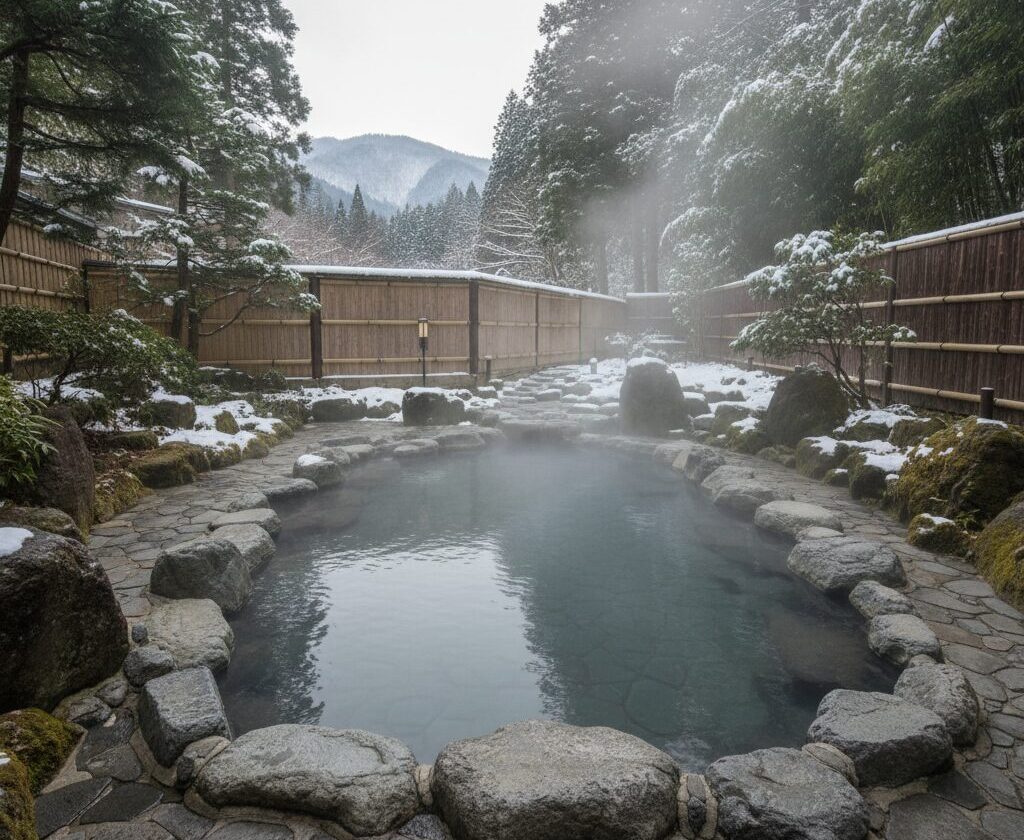
Hiking in Japan is more than just a physical challenge. It is a unique journey that blends ancient culture, unparalleled natural beauty, and exceptional infrastructure.
The preparation, etiquette, and safety knowledge you’ve gained from this guide will inform your steps, whether you are walking among the trees of Mt. Takao or traversing the rugged ridges of the Northern Alps.
Japan’s mountains welcome visitors who approach them with respect. Plan diligently, respect local traditions, and above all, deeply appreciate the astonishing scenery around you.
Now, let your Japanese mountain adventure begin.
This article was created by a current Japanese mountain guide based on years of experience and the latest local knowledge. I guarantee that all information provided is accurate knowledge for international visitors to enjoy the mountains in Japan safely and respectfully.
